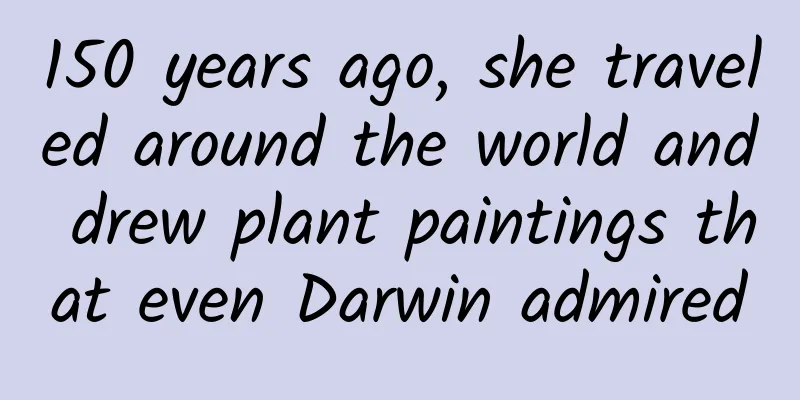There is a kind of romance in the universe, I am your companion star

|
Alien planetary system has a Jupiter world 99 times wider than Earth Astronomers using the same telescope that discovered the first exoplanet around a sun-like star have discovered two mini-Neptunes and a super-Jupiter. Schematic diagram of planets orbiting a Sun-like star in the TOI-1736 planetary system. (Photo credit: Leandro de Almeida). Astronomers have discovered two planetary systems centered around Sun-like stars. Both systems contain mini-Neptune planets, and one of them also harbors a giant "super-Jupiter" world, both of which are many times more massive than Earth. Studying these systems can give us a better understanding of how planets form and evolve around Sun-like stars (also known as "Sun analogs"). The astronauts discovered the two planetary systems using NASA's Transiting Exoplanet Survey Satellite (TESS) and the 1.93-meter telescope at the Haute-Provence Observatory (OHP) in southern France. The OHP telescope has a long history of detecting planets outside our solar system, or "exoplanets." In 1995, astronomers Michel Mayor and Didier Queloz used this telescope to discover 51 Pegasi b, the first exoplanet ever discovered orbiting a sun-like star. The two newly discovered planetary systems host at least three exoplanets, named TOI-1736 b, TOI-1736 c and TOI-2141 b, each of which joins a catalog of exoplanets that has grown to more than 5,500 entries since the mid-1990s. "We report the detection and characterization of two planetary systems around the solar analogs TOI-1736 and TOI-2141 using TESS photometric data and spectroscopic data obtained by the SOPHIE instrument on the OHP 1.93-meter telescope," lead author Guillaume Hébrard of the Institute of Astrophysics of Paris and his co-authors wrote in the journal Astronomy & Astrophysics. "We performed a detailed spectroscopic analysis of these systems to obtain precise radial velocities and physical properties of their host stars." TOI-2141: A planetary system around an ancient star The first planetary system discovered by Hebrard and his colleagues is TOI-2141, which is about 250 light-years from Earth and orbits a star that is about the same size as our Sun but appears to be older. We know this because TOI-2141's star lacks chemical elements heavier than hydrogen and helium, so-called "metals." In contrast, our 4.6-billion-year-old Sun is rich in such metals. The team calculated that the proportion of this metal indicates that the newly studied star is about 7.5 billion years old. The planet in this system, TOI-2141 b, was discovered when it passed across the face of its parent star, blocking some of the light from the star, thus causing the star to appear dim in the telescope's viewing point. The team was able to determine that the planet is about three times the width of Earth and about 24 times more massive, making it a mini-Neptune exoplanet. TOI-2141 b is about 12 million miles from its star, about 13 percent of Earth's distance from the sun. That means the mini-Neptune completes an orbit about once every 18.3 Earth days, a distance that keeps its temperature at about 840 degrees Fahrenheit (450 degrees Celsius). The planet's density and its hot surface temperature suggest that its rocky core is surrounded by an atmosphere filled with water vapor. TOI-2141 b is the only planet discovered in the TOI-2141 system so far, but the team has not ruled out the possibility of other smaller planets orbiting this Sun-like star. While the first planetary system was impressive, the second one the team discovered is even more unique. Bizarre TOI-1736 TOI-1736, located about 290 light-years from Earth, is even more peculiar than TOI-2141. At first glance, its primary star is unremarkable, about the same age as our sun, about 4.9 billion years old, and about the same size, only 15% larger, and about the same temperature. However, what makes the TOI-1736 system unique is that its primary star has a second, smaller companion star, making it a binary star system. Massive stars often exist in binary systems, but for stars the size of the Sun, this form of binary existence is relatively rare, with only about 44% of solar analogs having a companion star. Even more strangely, the companion star of TOI-1736 is so far away from the main star that the exoplanet discovered by the research team actually only orbits the main star of the system. More specifically, Hebrard and his colleagues discovered two planets in this bizarre star system. The first is another mini-Neptune, about 2.5 times wider than Earth and 13 times more massive. The planet, called TOI-1736 b, orbits its star at a distance of just 6.5 million miles, or about 7 percent of the distance between Earth and the sun, and completes one orbit every 7.1 Earth days. TOI-1736 b's close proximity to its star means it has a temperature of about 1,500 degrees Fahrenheit (800 degrees Celsius). The system's second planet, TOI-1736 c, is a so-called "super-Jupiter" with a mass of about 2,800 times that of Earth and a width of about nine times that of Jupiter, and an astonishing 99 times wider than Earth. - Jupiter-like exoplanets suggest our solar system may not be so unique Newly discovered 'mini-Neptune' may have an ocean or atmosphere -- but not for long - NASA's exoplanet telescope discovers eight "super-Earths" TOI-1736 c is about 128 million miles from its star, about 1.3 times the distance between Earth and the sun, which means it completes an orbit about once every 570 Earth days. This distance also puts the planet in the habitable zone of its parent star - the distance at which water can exist in liquid form. TOI-1736 c is a gas giant, so it has no solid surface, but it could have moons with liquid water on their surfaces - perhaps making them habitable? The answers to these questions will be revealed over time; in the meantime, the team is watching for signs that a third planet may be around TOI-1736. Soon, they plan to investigate this clue using the SOPHIE spectrograph at OHP. BY: Robert Lea If there is any infringement of related content, please contact the author to delete it after the work is published. Please obtain authorization for reprinting, and pay attention to maintaining integrity and indicating the source |
<<: You're already perfect! Is this the most "deceptive" advice?
Recommend
Danger! Don’t use this kind of light casually, it may cause blindness!
Expert of this article: Li Zongou, Master of Opht...
Has Sichuan Mustang learned this? Ford's most powerful Mustang will exceed 700 horsepower
Sichuan Mustang sued Ford Mustang for trademark i...
Unveiling the evolution of “artificial life”: Do genetic coding and electronic engineering both follow Moore’s Law?
Computer programming and gene synthesis may seem ...
What are the steamed buns that Wu Dalang sells, and how much are they worth?
The Wu Dalang that people are familiar with nowad...
Northern Guangdong People's Hospital: O2O closed-loop service for the entire medical process [WeChat Enterprise Account Case]
Establish connections between patients and doctor...
Doushen Chinese Language "24 Lessons on Primary School Reading Techniques"
Doushen Chinese Language "24 Lessons on Prim...
Talking about IP operation from the perspective of Perfect Diary’s marketing
Nowadays, with the continuous development of bran...
Flash is dying, Google acquires HTML5 development platform Divshot
H5 is gaining popularity, which always reminds pe...
Xiaomi Qingyue S1 convertible electric car exposed, priced at only 85,000 yuan? BYD: Fake
Recently, a media outlet suddenly revealed that X...
Community Operation: How do I operate the community?
The essence of a community is connection. It is a...
Shanghai Synchrotron Radiation Light Source takes pictures of molecules
Produced by: Science Popularization China Author:...
Why is there still dust in my house even though I clean it every day? Where does it come from?
This article was reviewed by Dr. Tao Ning, Associ...
Can the split posture make Xiaomi TV 3 worthy of the title of "next generation"?
Last week, the term "next generation" c...
Sorry, blue is beautiful, but I refuse blue food...
Why do blue foods make people lose their appetite...
Why do I spend money on information flow promotion but get no conversion?
" Why do you give me hope but let me down ?&...









